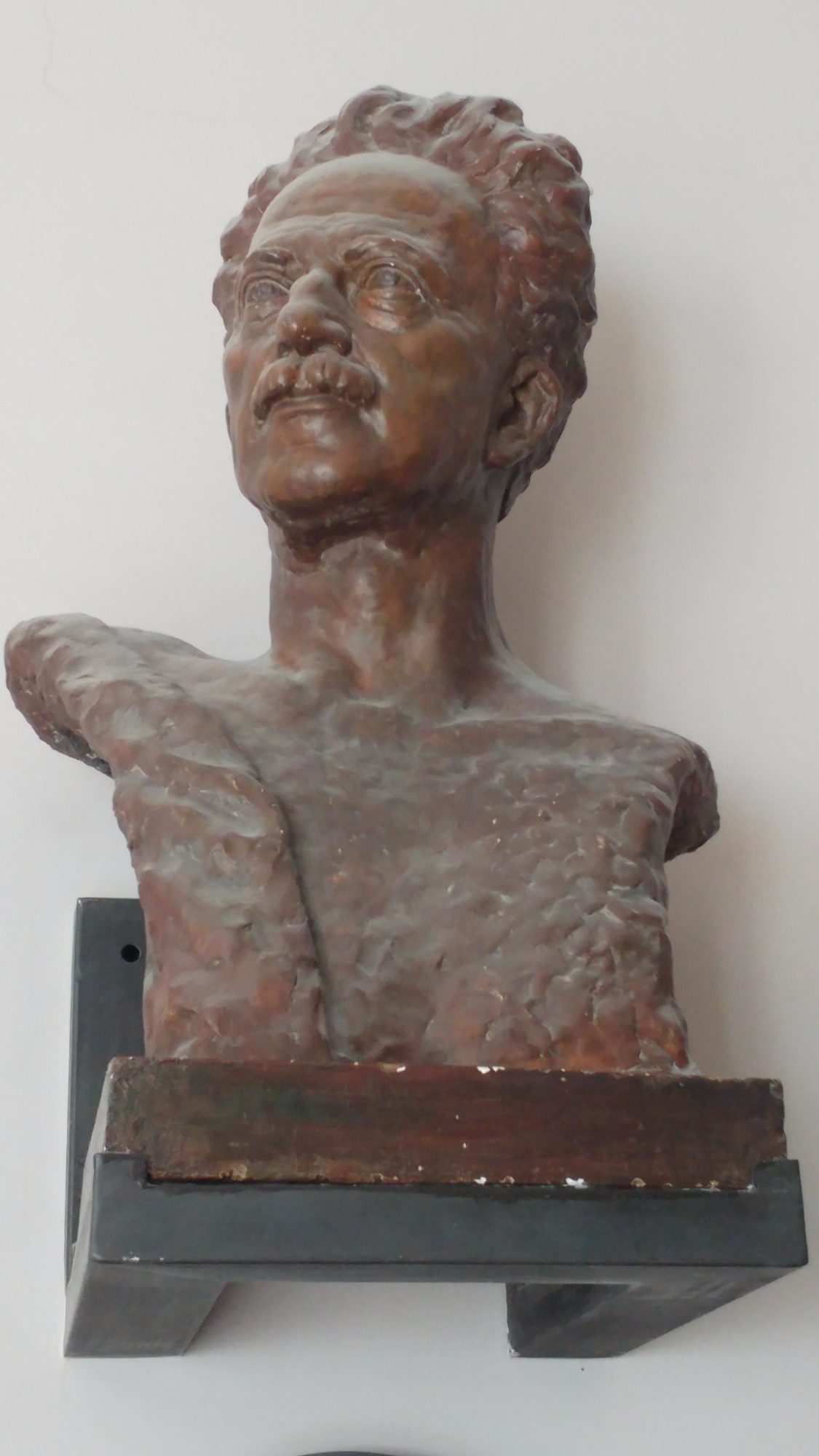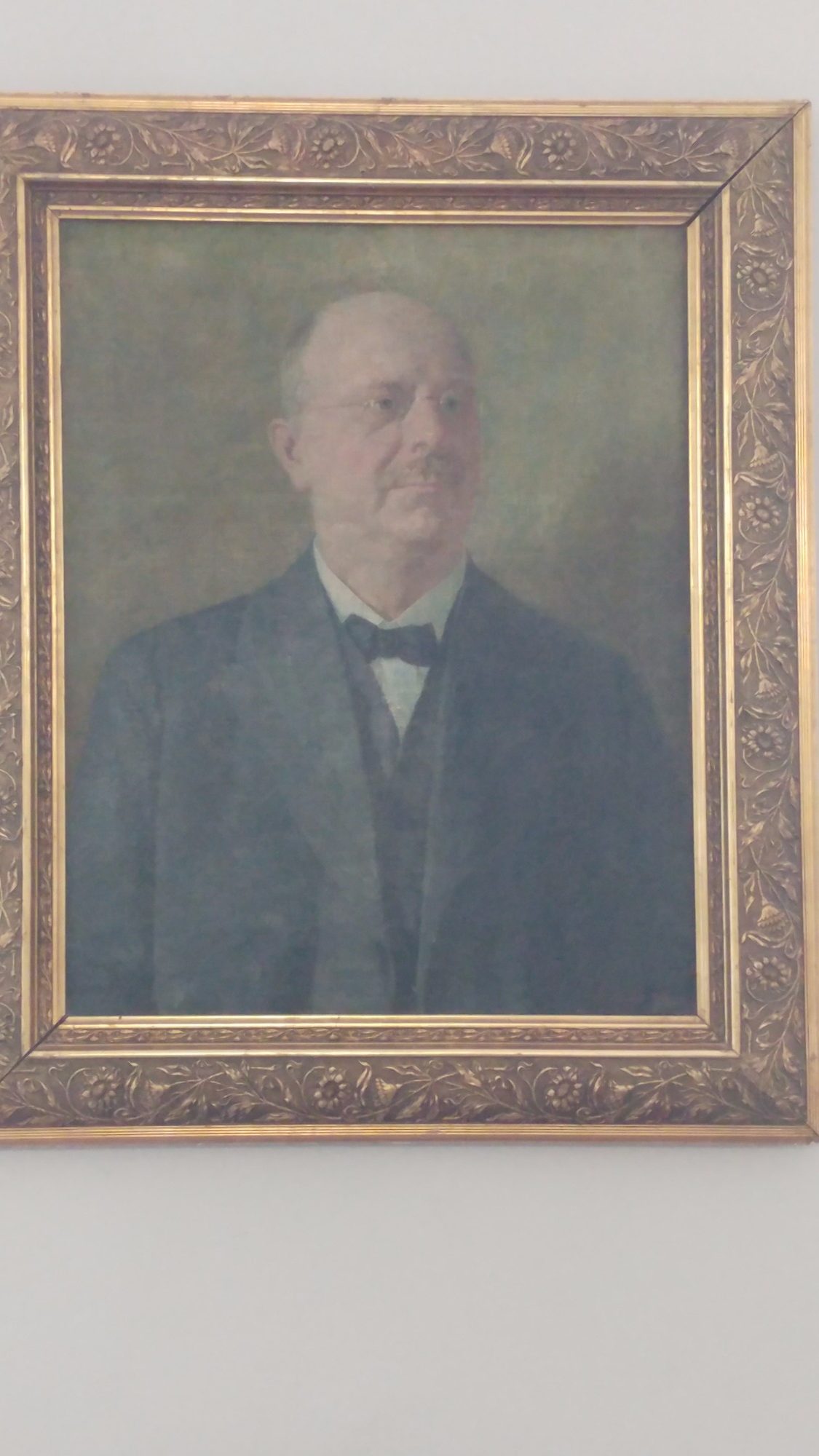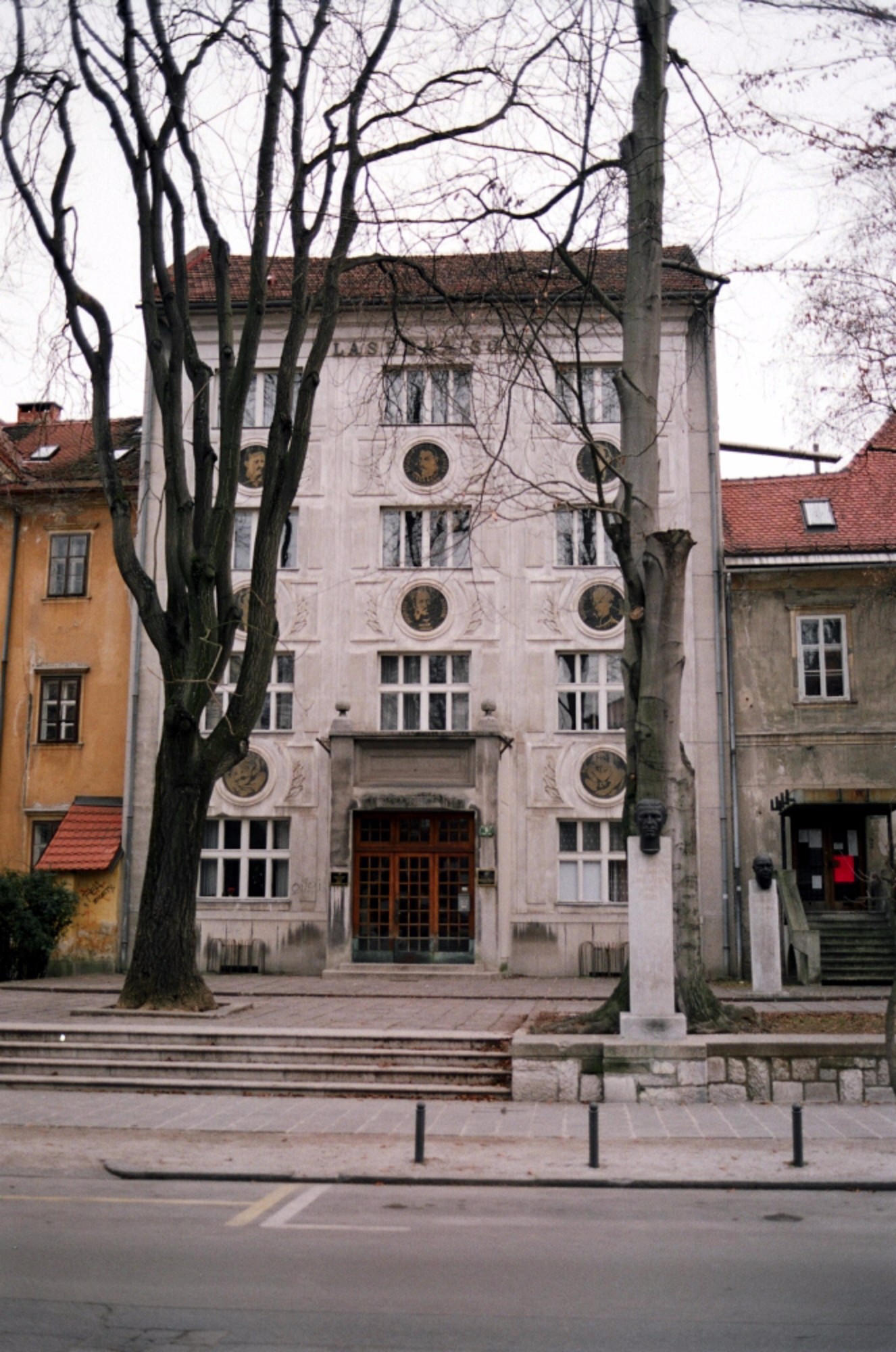The building housing the Glasbena matica Music Society, re-constructed after the 1895 earthquake, stands on the Avenue of Slovenian Composers in Vegova Street Ljubljana. In 1932, in the run-up to the celebration of the 60th anniversary of Glasbena matica and the launch of the First Slovenian Music Festival, Slovenian architect Jože Plečnik was commissioned to replan the street and renovate the building. Plečnik redesigned Vegova Street together with sculptor Lojze Dolinar, giving prominence to the Avenue of Slovenian Composers and its eight monuments. After World War II, in the early 1950s, the façade of the Glasbena matica Music Society was remodelled following Plečnik’s architectural concept.
Namely, a moat once enclosed Ljubljana on the site of the present-day Vegova Street, a defensive trench that somewhat thwarted Plečnik’s restoration and refurbishment plans for the Glasbena matica building. In re-envisaging the exterior of the house, Plečnik first added four columns that supported two balconies, redesigned the window frames and placed two streetlights – of the same design as those on the Three Bridges – in front of the entrance. As the foundations were laid on the filled-in defensive trench, one of the balconies started to subside and eventually fractured, and had to be removed for safety reasons. The renovation of the exterior was carried out after World War II, but Plečnik withdrew from the project.
Following Plečnik’s style, the new façade was thus designed in 1952 by the architect’s assistant, Janko Valentinčič, and Tone Žnidaršič. Plečnik’s columns and balcony were removed and the façade decorated with elaborately designed gilded medallions. Today, the classicistic façade is adorned by gilded relief portraits of Slovenian musicians: Jacobus Handl Gallus, Kamilo Mašek, Miroslav Vilhar, Hrabroslav Volarič, Anton Hajdrih and Gregor Rihar. Giving the building an air of musical inspiration, the portraits of the composers are complemented by two mythological figures, a Muse holding a lyre and Pan with his flute.
The History of the Glasbena matica Music Society
The year 1848, when the March Revolution in the Habsburg Empire spurred a wave of political and social change, was a landmark year in Slovenian history. The upheavals echoed an awakening of national consciousness and the emancipatory tendencies of European nations, including the people of Slovenia, who have always built their identity and independence on their language and, in the given socio-historical context, striven for its equality with other languages. Therefore, language assumed a predominant role in Slovenian artistic expression. To sing in the mother tongue was a patriotic act, a devotion to the homeland that also gradually spread beyond the national boundaries through the Reading Societies movement, which emerged and gathered strength after 1861.
After 1864, with the aim of boosting the momentum of Slovenian cultural endeavours, numerous societies were founded, including the Slovenska matica Music Society, the Dramatic Society, the National Printing House and, ultimately, in 1872, Glasbena matica Ljubljana.
Initially, Glasbena matica focused on publishing music scores and specialist publications, gradually developing into a central music education establishment. It attended to the publication of countless works by Slovenian composers and fostered the collecting of folk music, built up an archive of musical works and staged concerts. Matica also ran a shop specialising in music requisites, including sheet music, music scores and songbooks. At the onset of its second decade, Glasbena matica established a music school, and a few years later a choir, thereafter the first Slovenian Philharmonic and Orchestral Society, and a Conservatory of Music, which fulfilled Matica’s principal aim: to provide training and education for professional and amateur musicians. In delivering music education, Matica’s profound influence has extended throughout Slovenia and shaped the development of its cultural life.
Apart from being a repository of knowledge, Glasbena matica is particularly engaged in publishing recordings and specialist publications, primarily centring on issuing choral pieces, releasing CDs by Slovenian artists and special publications that are too specialised to be of great interest to other publishing houses.
Adapting to the tide of political change, Glasbena matica has reformulated its activity, adjusting after 130 years to a new climate, but still remaining faithful to its main fields of endeavour: concert organisation, music education and music publishing. However, in view of the rising numbers of new vocal ensembles, more attention has been devoted to vocal music performance.
Maia Juvanc





